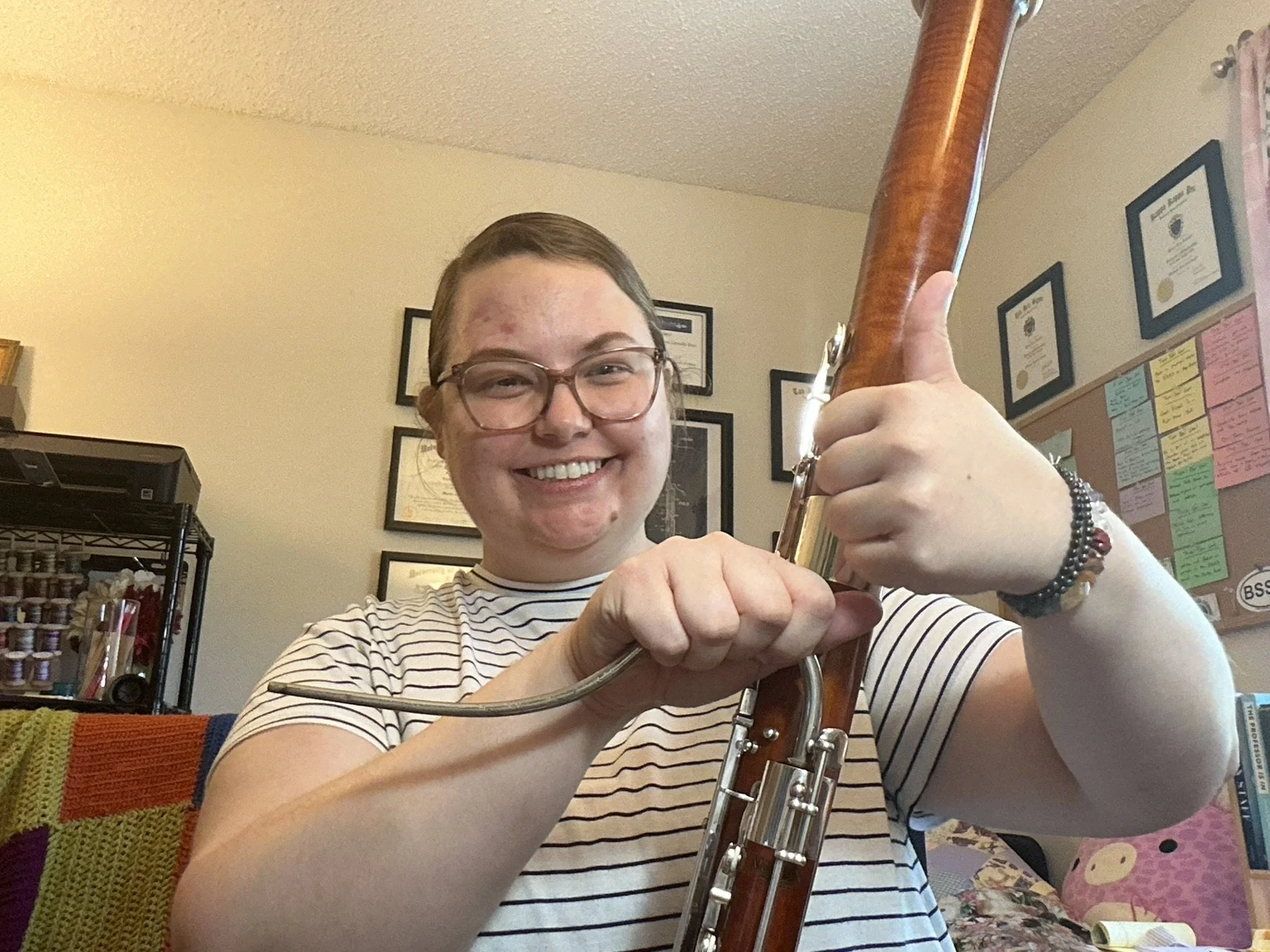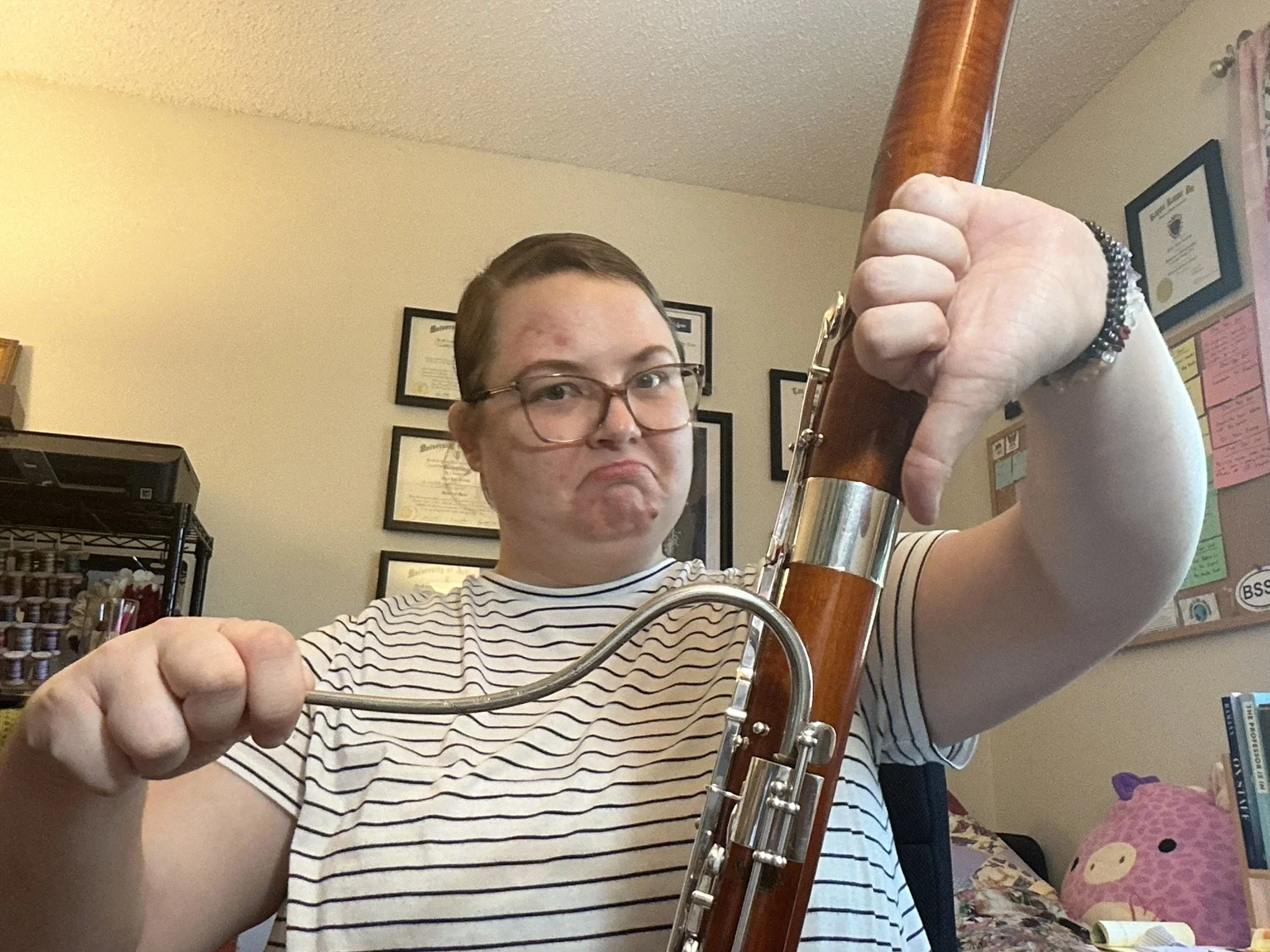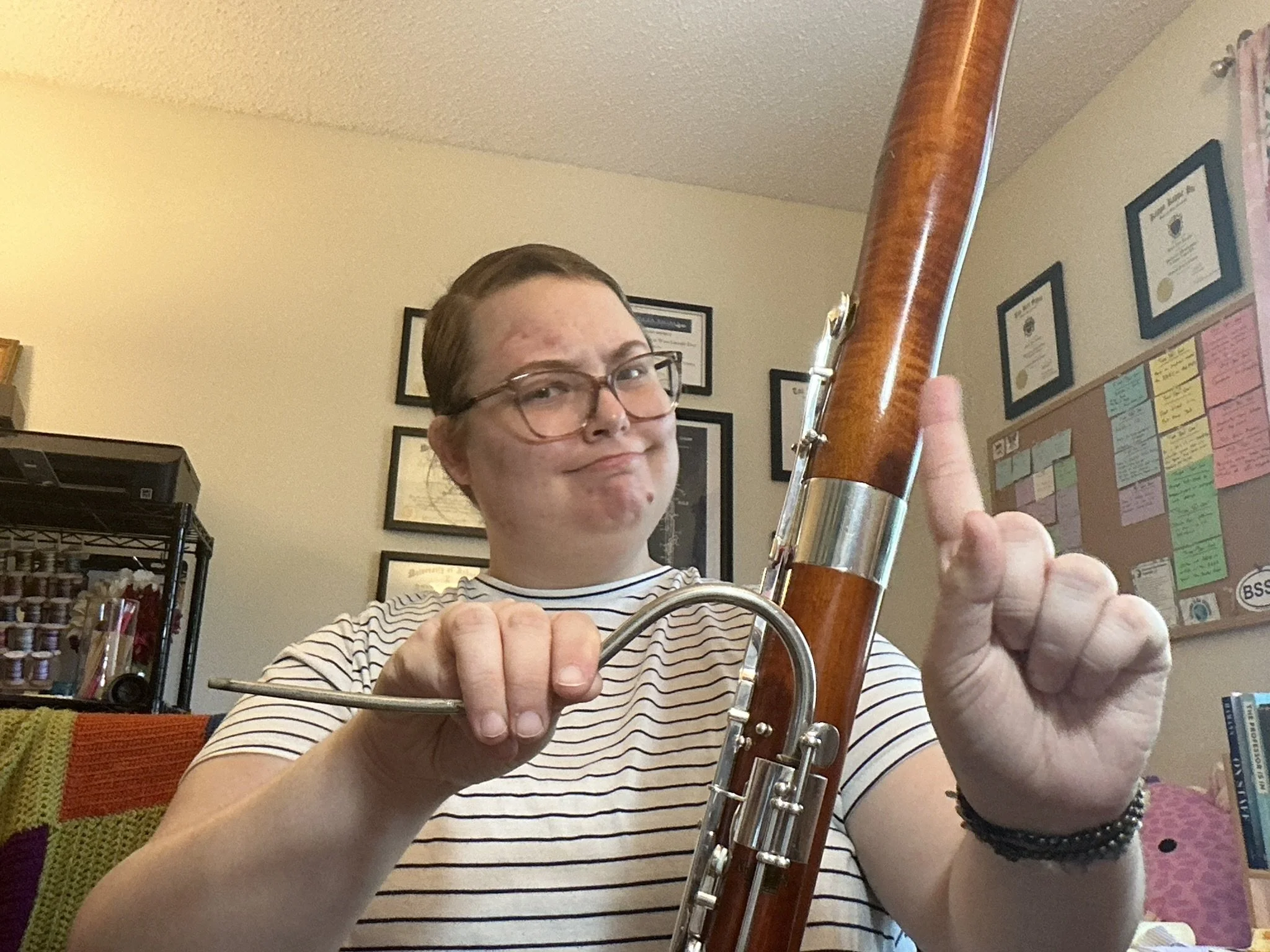How to Take Care of your Bocal and What to do When it is Damaged.
Picture this: your student arrives for their lesson, assembles their bassoon like normal, and then suddenly, “SNAP.” Their bocal bends.
By some unfortunate circumstances, I have had a couple of students end up with damaged bocals this year. Each time that has happened, these poor souls turn to me wide-eyed, panicked, and swearing up and down that they didn’t do anything wrong. Being the kind, patient teacher I am, I respond with grace as I know that a damaged bocal does not happen in a vacuum.
Why do bocals break?
A broken bocal is often the result of a weak point in the metal finally reaching a breaking point. Bocals are constructed by forming a flat sheet of metal into a cone shape. This results in a seam that is then flattened and soldered as the bocal is plated and bent to form its curved shape.
Over time, if too much stress is consistently applied to one point of the bocal, the seam will begin to wear out, causing the metal to collapse.
(For further reading on bocal construction, check out How the Bocal is Made from Yamaha!)
How can damage to the bocal be prevented?
One way to prevent the bocal from being damaged is to handle it with respect and caution. I always advise my students to handle their bocals by the large curve, which is often stronger than the bocal tip. When inserting and removing the bocal from the bassoon’s receiver, gently grip the bocal as close to the straight part of the bocal, near the whisper keyhole, and use small twists to guide the bocal into the receiver.
Additionally, regularly applying cork grease to the end of the bocal will ensure that the bocal and the instrument can be assembled smoothly, so strong force is not applied to the bocal, risking damage.
How can I fix a broken bocal?
Bocals should be repaired by a repair tech who can properly re-bend and resolder the metal. You can check with your local instrument repair shop if they can repair a bassoon bocal, but you will likely need to contact a specialist (I have linked a handful below).
I would refrain from attempting to bend the bocal too much to get it back to its original position to avoid causing additional damage to the metal.
The worst-case scenario is that you will need to purchase a new bocal. Fox Products sells a basic student bocal compatible with their student model bassoons. Several bassoon retailers do sell used bocals. However, their supply may vary.
I suggest doing your own research to find a solution that works best for your student, your band, and your budget!
I’ve decided to replace the bocal. Which one should I get?
When selecting a new bocal, here are a few things to keep in mind!:
Bocal length: Bassoon bocals come in a handful of lengths, affecting the intonation of the entire instrument. For most bassoonists, students included, a mid-length bocal will serve the student well. For bocals manufactured by Fox Products, a #2 length bocal should work well for most bassoons. Other manufacturers' length numbers may vary. For example, Heckel’s lengths range from 0-3.
Construction: When selecting a new bocal for your student or your school, I suggest avoiding any advertised as “thin-walled.” This means that those bocals' metal is thinner, making them more prone to damage if not handled with care. For a school, selecting a standard bocal should guarantee that the metal is not too thin and will be able to handle normal wear and tear from your students.
Resources
Here are a handful of links to resources and vendors who can assist you with caring for or replacing your bassoon bocal! Best of luck!
Nielsen Bocal Supply - Bocal and Bassoon Repair
Midwest Musical Imports - Bassoon Repair



